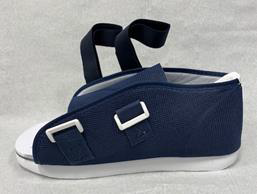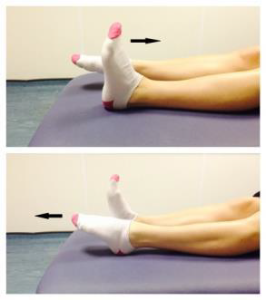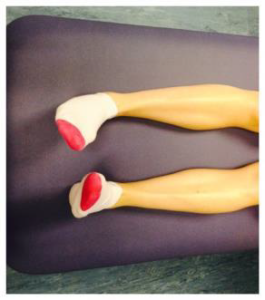Neurodiversity information for parents and young people

General advice


Swelling is often worse at the end of the day. Resting with your foot up, and using ice or cold packs, will help (see 'Caring for your injury', below). You can also take pain killers.
![]()

You can take the shoe off at night or when resting.
Start to exercise as soon as possible. See below for details.
![]()
![]()
We do not usually book to see patients again. With this injury, most people recover well by following the instructions we give here.
![]()
- if you still have significant pain or swelling after 12 weeks
- if you are concerned about your symptoms
- if you are unable to follow the instructions given below
- if you have pain other than in your foot.
Caring for your injury: week 1 to 2
Rest your foot, especially in the first 3 days. Raise your foot on a stool or cushions so that it is above the level of your hip. This will help reduce the swelling.
Wear your shoe whenever standing and walking. You can take it off when resting and at night, and to wash and dress.
Use a cold pack to help with pain and swelling. You can use an ice pack or bag of frozen peas wrapped in a damp towel. Put this on your foot for up to 15 minutes every few hours. Make sure the ice is not in direct contact with your skin.
Exercises
It is important to get your ankle and foot moving early to stop it getting stiff.
- Do these exercises 3 to 4 times a day.
- Start straight away.
- Take your shoe off first.
- Move gently and within comfort. You do not need to push into pain.
1.

- Repeat this 10 times.
2.

- Repeat this 10 times.
3.

- Repeat this 10 times.
Caring for your injury: week 3 to 12
You can start to reduce how much you wear the shoe 3 weeks after your injury.
Start by walking without the shoe at home but wearing it for longer distances. Build up to walking without it outside and for longer walks. You should not be using your shoe 6 to 8 weeks after the injury.
It is normal to still have mild discomfort and swelling. This may continue for 3 to 6 months.
Activity and exercise
- Keep doing your exercises until you have full movement in your foot.
- Gradually increase your activity.
- Avoid anything that involves impact for 3 months. This includes running, jumping and dancing.
Frequently asked questions
The shoe has a thick sole which can make you feel uneven. Make sure you wear a supportive shoe or trainer on your uninjured foot. This will reduce stress on other joints.
If you need more advice, or are struggling to reduce how much you wear the shoe, contact the Trauma Triage Clinic (details below).
You can return to driving when:
- you are no longer using your shoe
- and you can walk comfortably
- and you can perform an emergency stop without pain.
Before you start driving again, it is recommended that you speak to your insurance company and test your ability to drive in a safe environment.
You can get a fitness for work statement from your GP.
Both the shoe and crutches can be returned to the Physiotherapy Department.
Contact information
Trauma Triage Clinic
Telephone:
020 8934 6983
Monday to Friday, 8am to 4pm
For urgent queries outside these times
call NHS 111
Email: Khn-tr.orthopaedics@nhs.net